Good morning everyone! We’re back with another day in our African History for kids series! Today we’re learning about the last great African empire – the Zulu Nation.
Since the Zulu tribe engaged in brutal warfare, they have often been called a nation of warriors. While the kingdom existed for years before his reign, it really came into power under the rule of the famous leader, Shaka.
Here’s a Zulu Empire History for kids unit that we enjoyed as a family!
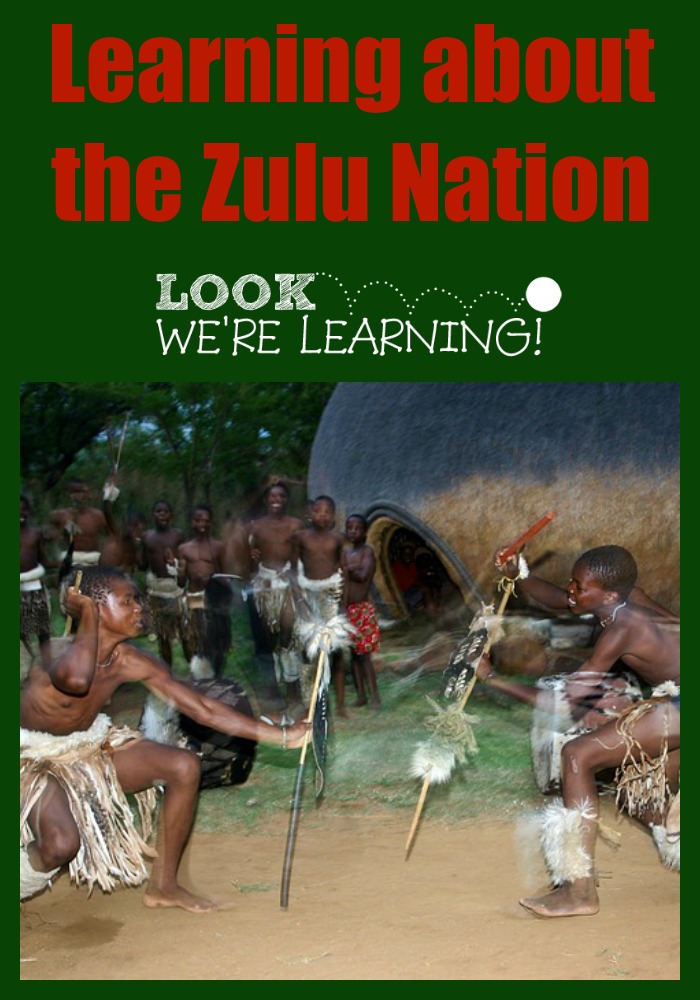
What was the Zulu Nation?
Originally, the Zulus were a clan like all other African tribes at the time. Eventually, though, they would be united with other tribes under the rulership of Shaka Zulu. After his death, the empire continued for about 50 years before it was overtaken and colonized by Britain.
The Zulu Nation was located in South Africa, right along the coast of the Indian Ocean. On our Africa map from Discover Africa, we marked it in red.
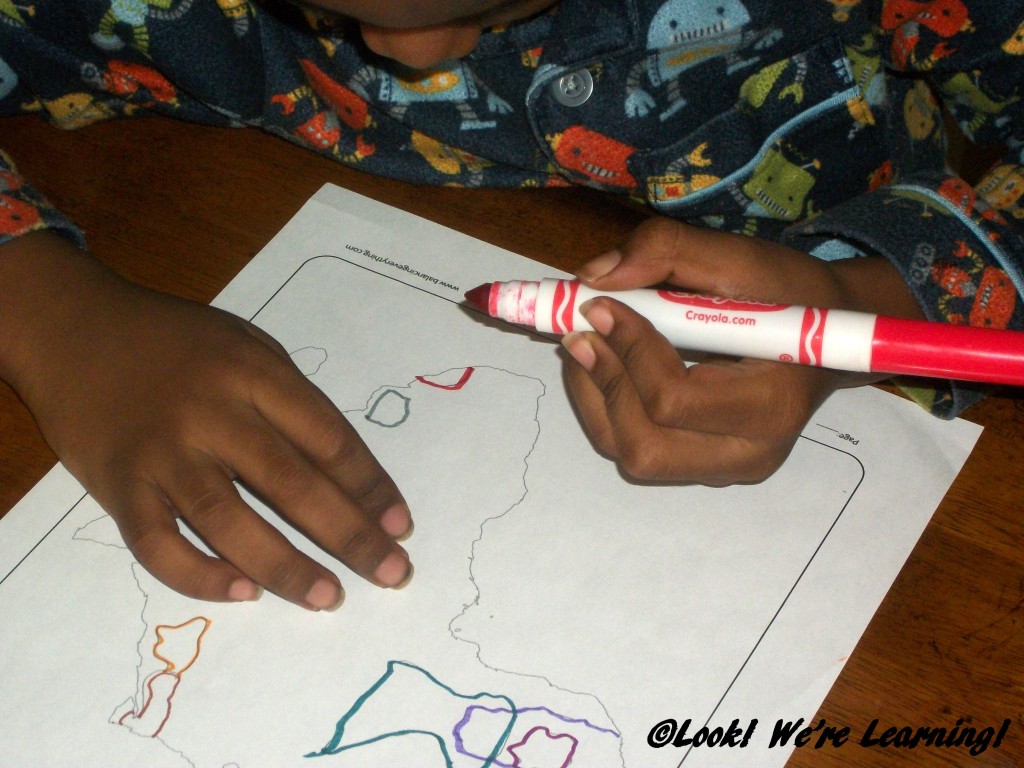
Who was Shaka Zulu?
Shaka kaSenzangakhona was the illegitimate son of the Zulu chief Senzangakhona. He and his mother, Nandi, were never officially recognized as royal family and were driven away. Later Shaka was taken in by a chief of a neighboring clan, who helped him take charge of the Zulus after Senzangakhona died. After Shaka took the throne of the Zulus, he was given the name Shaka Zulu by a band of British colonists who landed in the area toward the latter part of his rule.
Shaka’s early childhood experiences seemed to harden him toward others. During his reign, he was incredibly cruel to potential rivals and dissenters. The only person who he showed affection for was his mother. He even forbid the people from planting crops for months after she died, nearly bringing the Zulus to starvation. Despite the cruelty of his rule, Shaka is widely admired by present-day Zulus and a memorial to him stands in South Africa:
The Zulus – A Nation of Warriors
Drawing on his own experiences, Shaka intended that his people be warriors. He assembled an army of 50,000 men and 10,000 women and insisted that youths be initiated into warfare from an early age. To prepare his soldiers, Shaka would force them to march 50 miles without food or water and require them to walk without sandals to toughen the soles of their feet. Needless to say, they were fairly successful in battle.
To conquer neighboring tribes, Shaka instituted the “bull horn” military formation. The majority of the warriors would go out to fight in a central group, flanked by two smaller, crescent-shaped regiments. While the central group took on the bulk of the enemy army, the flanking regiments would circle around and attack from the back, preventing any from escaping.
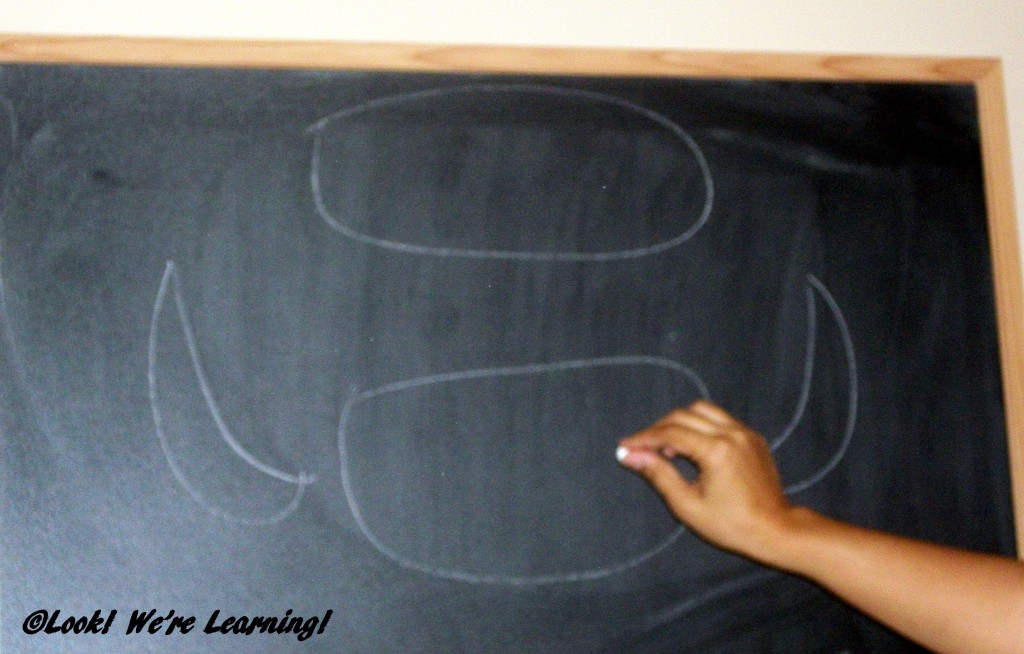
The military style that Shaka invented proved to be successful long after his death. In the late 1870s, the British invaded the Zulus, but underestimated their strength against “civilized” firearms. At the Battle of Isandlwana, British general Lord Chelmsford and his men accidentally stumbled upon 20,000 Zulu warriors who were resting on the day of the new moon. Chelmsford and his forces were completely overwhelmed by the bull horn formation and retreated, after losing over 1,000 soldiers.
The Zulus still hold on to some of these warrior rituals to this day. Groups of them perform traditional warrior dances dressed in full regalia but with smaller ornamental shields:
Image c/o: Jean-Claude Hanon via Wikimedia Commons
You can see a traditional Zulu warrior dance on the YouTube video below. It’s really worth watching. (Note: Zulu women did not wear tops, so the women in the video are topless. There is nothing whatever sexual about it, but I did want to tell you beforehand.)
Zulu Warrior Shields
One of the most widely used instruments of war was the Zulu shield. Shaka designed the original shield himself, lengthening it to cover the entire body so that warriors could engage in hand-to-hand combat with the enemy. In the image below, you can see that the shields were designed so that warriors could carry their weapons directly behind them into battle.
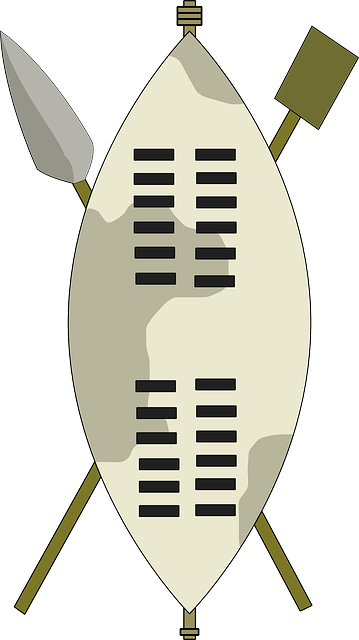
We decided to make some Zulu shields of our own with drawing paper and cardboard.

To keep the colors authentic, we used neutrals and tans to evoke the cowhide that Zulu warriors used for their shields.
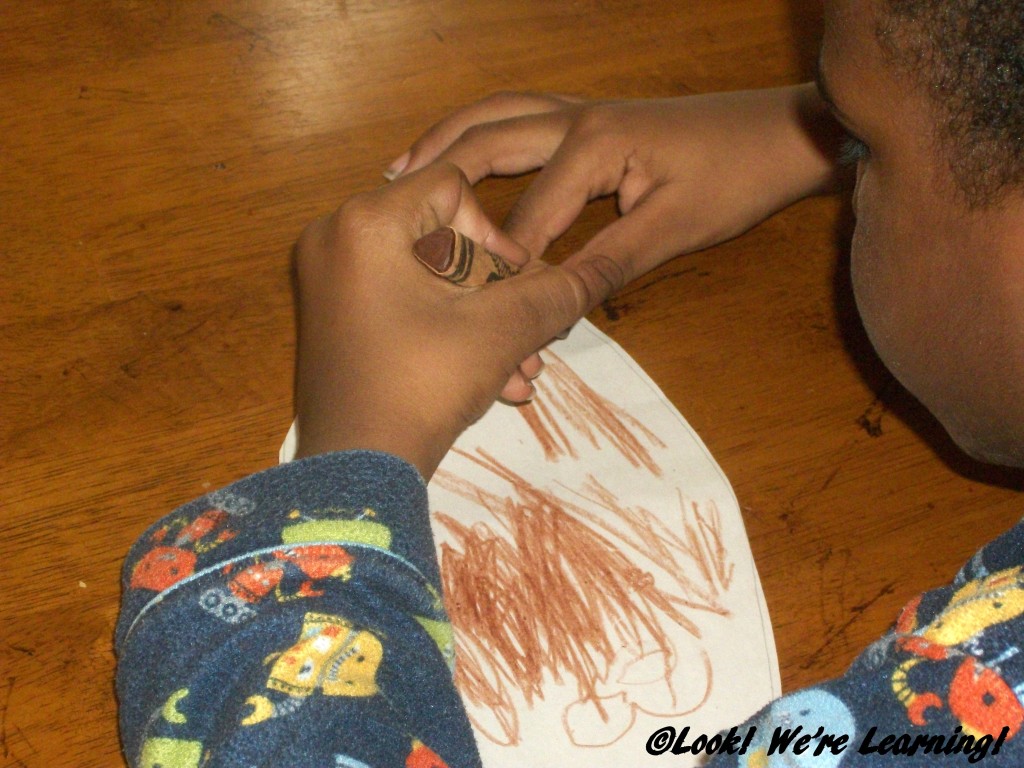
Once we colored the shields, we just added two holes at the top and bottom to slide the cardboard strips through.
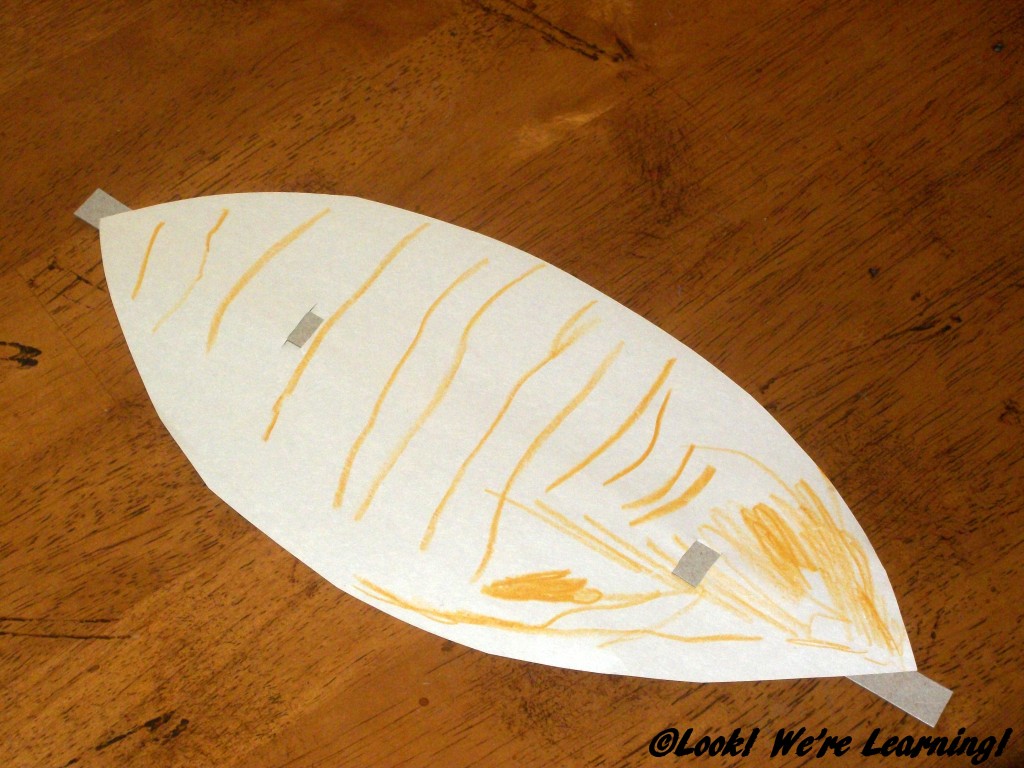
After the initial decoration, we decided to go back and add alternating spaces like the authentic shields.
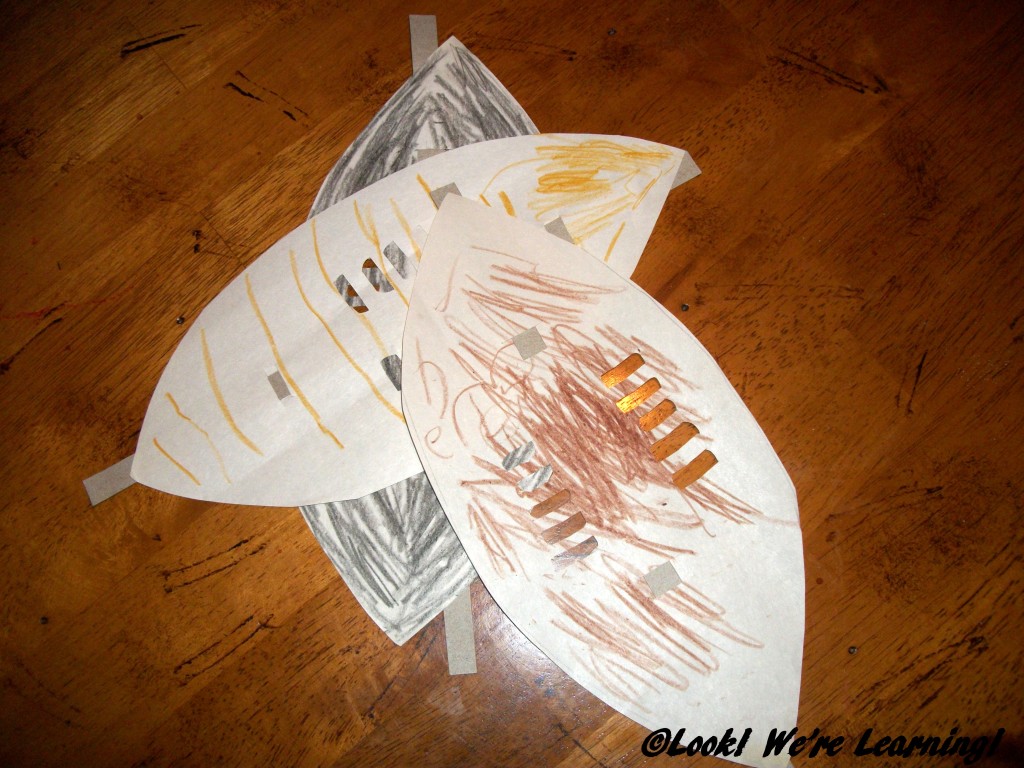
All done! We had quite a time reminding the kids that these were just shields, not weapons. Everyone seemed to think that they were Shaka Zulu once they held them. 🙂
Books and Resources about the Zulu Nation
Africa Junior: Shaka Zulu and the Rise of the Zulu Kingdom – Nice kid-friendly summary of the history of Shaka and the Zulus.
South African History Online: The Zulu Kingdom and the Colony of Natal – An excellent discussion on the Zulu empire and its interactions with the British before colonization
Wikipedia: Zulu Kingdom – The history of how the Zulu Empire was formed and what happened to it after Shaka’s death
Wikipedia: Shaka – Well-balanced article about the origin, life, and worldview of Shaka Zulu
Zulus of Southern Africa (Original peoples) by Harriet Ngubane
Shaka: King of the Zulus – (Note: This is an excellent, excellent book about Shaka’s life, written in a child-friendly manner with colorful illustrations. I highly recommend it.)
Tomorrow we’ll be covering the colonization of Africa and the Trans-Atlantic Slave Trade and how these two events ended the centuries of rulership by traditional African kingdoms. Feel free to come back and learn with us!
For more on African kingdoms, visit our 10 Days of African History for Kids page to read about other civilizations, including the Asante, Great Zimbabwe, and Mali!

This post is part of the Autumn 2013 Hopscotch from iHomeschool Network! Click below to read all of the Hopscotch posts from our fellow bloggers!





It’s great to see people still interested in my culture.I am bit disappointed by some of misinformation placed on Internet about the Zulu.I have placed some videos showing real modern day zulu warriors on you-tube titled ” We still are warriors ” .I would love to share any information on Zulu culture with you
Thanx
Siyabonga Makhathini
Thanks for going through all the work to post this information for other moms like me who are trying to give a broader perspective to Africa than just discussing Egypt. Fabulous! My son is really enjoying all the material and craft ideas!
Yay! I’m so glad to hear it! And yes, history books absolutely act as if Egypt is the only part of Africa that existed in ancient times…lol. Thanks for stopping by!